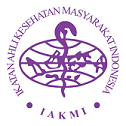Analisis partisipasi masyarakat dalam meminimalisir dampak penggunaan media sosial pada anak melalui Omah Bocah di Koang Kecamatan Jetis, Kabupaten Bantul Yogyakarta
DOI:
https://doi.org/10.12928/promkes.v1i1.288Keywords:
Omah Bocah, Analysis, Participation, CommunityAbstract
Introduction: Social problems that have occurred have been successfully adopted by the development media that can be used as victims or perpetrators of crime through social media. The many negative impacts of using social media to make children, build the Omah Bocah community in the Koang area of Jetis District, Bantul Regency, Yogyakarta with the aim of minimizing the use of social media. The importance of integrating the community in the context of social issues so that it can be used to analyze the community in minimizing the use of social media use in children through Omah Bocah in Koang, Jetis District, Bantul Regency, Yogyakarta.
Method: qualitative research with an observational descriptive design. Using interview and observation methods. The research subjects consisted of eleven people consisting of one of the founders of Omah Bocah, two Omah Bocah administrators, three children of Omah Bocah users, two community leaders and three communities. Data collection tools are interview guides, observation guides, handphones and stationery.
Results: Omah Bocah is a community that aims to minimize the impact of using social media. The history and strategy of the establishment of Omah Bocah with the role of community participation have included determining strategic locations and easy access. socialization of the delivery of vision and mission. Community empowerment and community self-reliance according to ability. Participation is seen from participation in planning, implementation, monitoring evaluation and utilization has been running well to include all levels of society with their respective roles. Obstacles from the implementation of Omah Bocah in the form of awareness from their children and also the ability to procure materials by the Omah Bocah management.
References
2. Aprillia, Theresia, dkk. (2014). Pembangunan Berbasis Masyarakat. Bandung: Alfabeta.
3. Istiyanto, S.B, 2016, Telepon Genggam Dan Perubahan Sosial Studi Kasus Dampak Negatif Media Komunikasi dan Informasi Bagi Anak-Anak di Kelurahan Bobosan Purwokerto Kabupaten Banyumas. Jurnal Komunikasi Ikatan Sarjana Komunikasi Indonesia (2016).1:58–63.
4. Huraerah abu, 2006, Kekerasan Terhadap Anak, Bandung: Penerbit Nuansa
5. Sulaiman, E, S., 2016, Pemberdayaan Masyarakat di Bidang Kesehatan Teori dan Implementasi, Yogyakarta: Gadjah Mada University Press.
6. Mardikanto, T, 2017, Pemberdayaan Masyarakat Dalam Persepktif Kebijakan Publik, Bandung: Penerbit Alfabeta.
7. Septiany, I, 2012, Partisipasi Masyarakat dalam Implemenrasi Program Nasional Pemberdayaan Masyarakat (PNPM) Mandiri Perkotaan Dengan Penggunaan Model CLEAR Di Kelurahan Kaliabang Tengah Kecamatan Bekasi Utara Kota Bekasi, Skripsi Ilmu Sosial dan Politik Departemen Ilmu Administrasi, Universitas Indonesia,Depok Jakarta.
8. Nikkhah H.A, 2009, Participation as a Medium of Empowerment in Community Development, European Journal of Social Sciences – Volume 11, 2013, page: 391-398).
Downloads
Published
Issue
Section
License
Copyright (c) 2018 Ade Sofiana, Sitti Nur Djannah

This work is licensed under a Creative Commons Attribution-ShareAlike 4.0 International License.
Authors who publish with JCP: Jurnal Cakrawala Promkes agree to the following terms:
- Authors retain copyright and grant the journal the right of first publication with the work simultaneously licensed under a Creative Commons Attribution License (CC BY-SA 4.0) that allows others to share the work with an acknowledgement of the work's authorship and initial publication in this journal.
- Authors are able to enter into separate, additional contractual arrangements for the non-exclusive distribution of the journal's published version of the work (e.g., post it to an institutional repository or publish it in a book), with an acknowledgement of its initial publication in this journal.
- Authors are permitted and encouraged to post their work online (e.g., in institutional repositories or on their website) prior to and during the submission process, as it can lead to productive exchanges, as well as earlier and greater citation of published work.

This work is licensed under a Creative Commons Attribution-ShareAlike 4.0 International License












